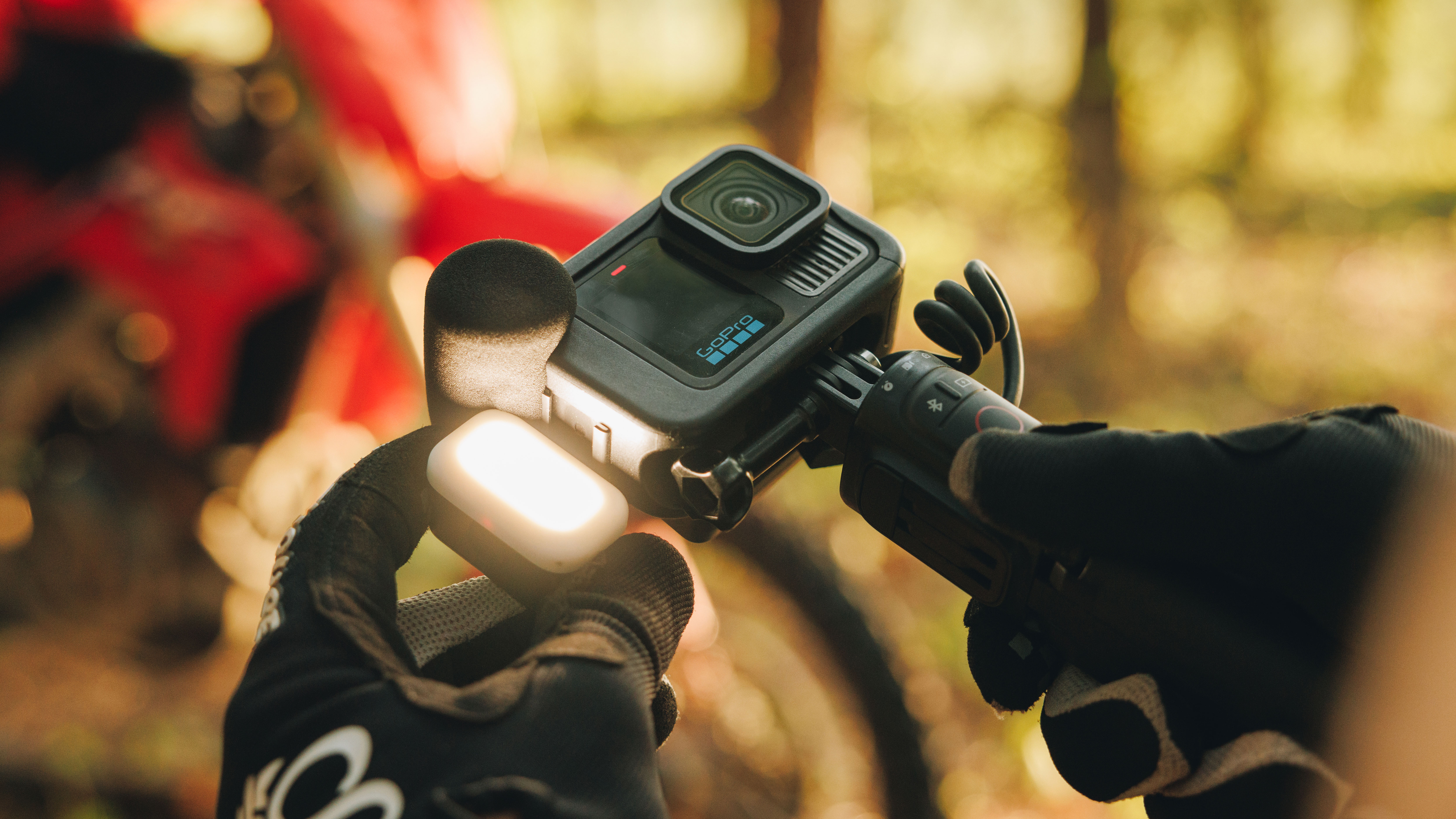
For many people, when you think of action cameras, you think of GoPro. The brand has been at the forefront of action cam tech for the past twenty years, but with recent iterations getting less impactful updates, many have questioned if we have hit peak action camera, and where innovation has left to go.
But GoPro might just have a solution to keep its cameras evolving – and that's lenses lenses lenses. GoPro is back with its latest flagship camera for 2024 – the GoPro Hero13 Black, and while there are certainly improvements under the hood, the big focus this year is what you are attaching up front.
Of course, this isn’t the first time GoPro has released lenses for its Black cameras. The Hero12 Black launched alongside the Max Lens Mod 2.0 for an even wider FOV. However, that was just a taster of what was to come. There are four (or seven) new lenses in what GoPro has dubbed the HB-Series, including an ultra-wide, macro, anamorphic, and four different strengths of neutral density (ND) filter.
But not just content with snapping some bits of glass to the front of the camera, GoPro has streamlined the whole experience, with automatic recognition for each lens, which adjusts the camera settings for a seamless switch without any user input to offer optimal footage – and it looks pretty smart.
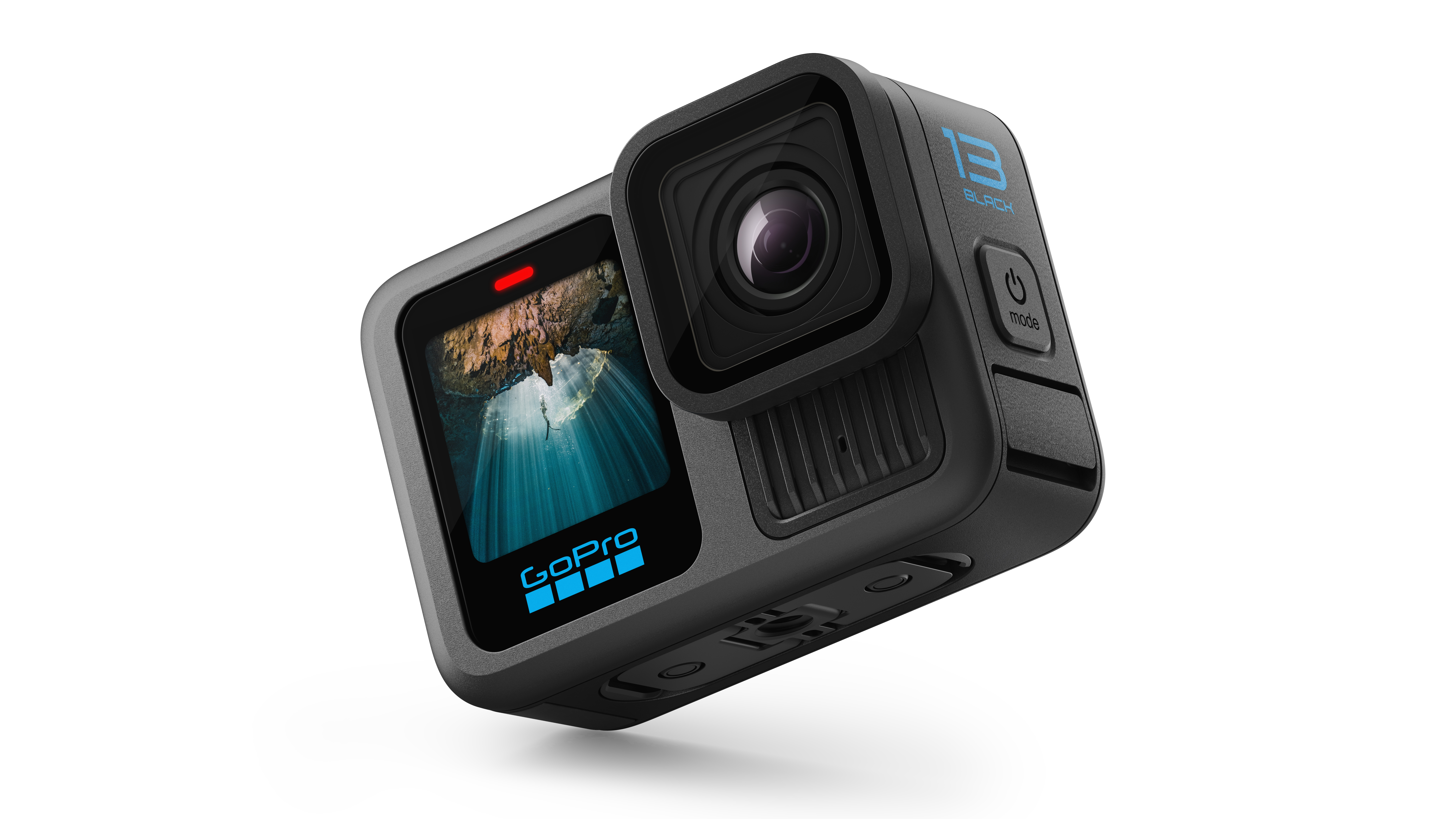
So let's break down the new lenses in a little more detail:
Ultra-wide: building on what it started with last year's MaxMod 2.0, this ultra-wide lens mod stretches the field of view (FOV) to 177° while also maintaining GoPro’s rock-steady Hypersmooth stabilization. While the older MaxMod 2.0 is compatible with the new 13 Black, only the HB-Series lens has auto recognition to adjust camera settings accordingly. The lens is available at launch and costs $99.99/$99.99.
Macro: not a true macro lens, but it does allow for a x4 closer focus than the standard GoPro lens with a minimum focus distance of 4.22in/0.11m. Regular GoPro users who are often frustrated by soft-focusing close-up, or unflattering distortion might find a lot to love with this macro lens. The lens also has a variable focus ring and focus-peaking compatibility for pin-sharp footage. This lens is also available at launch for $129.99/£129.99.
NDs: neutral density filters restrict the light that enters the camera, less light means that slower shutter speeds can be used which gives a cinematic blur to footage. Higher numbers mean higher strengths of light-stopping power. For ND novices, the Hero13 handles all the settings and will guide you to which strength to use. The HB-Series ND filters come as a set including an ND4, ND8, ND16, and ND32. Available at launch and costing $69.99/£69.99 for the set.
Anamorphic: perhaps the least understood lens on this list, anamorphic lenses are used in professional filmmaking to give a particular cinematic look to footage as well as create signature lens flare. The GoPro 13 Black handles all the desqueezing in-camera simplifying the process and giving 21:9 or 16:9 footage. The lens will cost $129.99/£129.99, but there will be a bit of a wait to get your hands on one, with it not due for release until 2025.
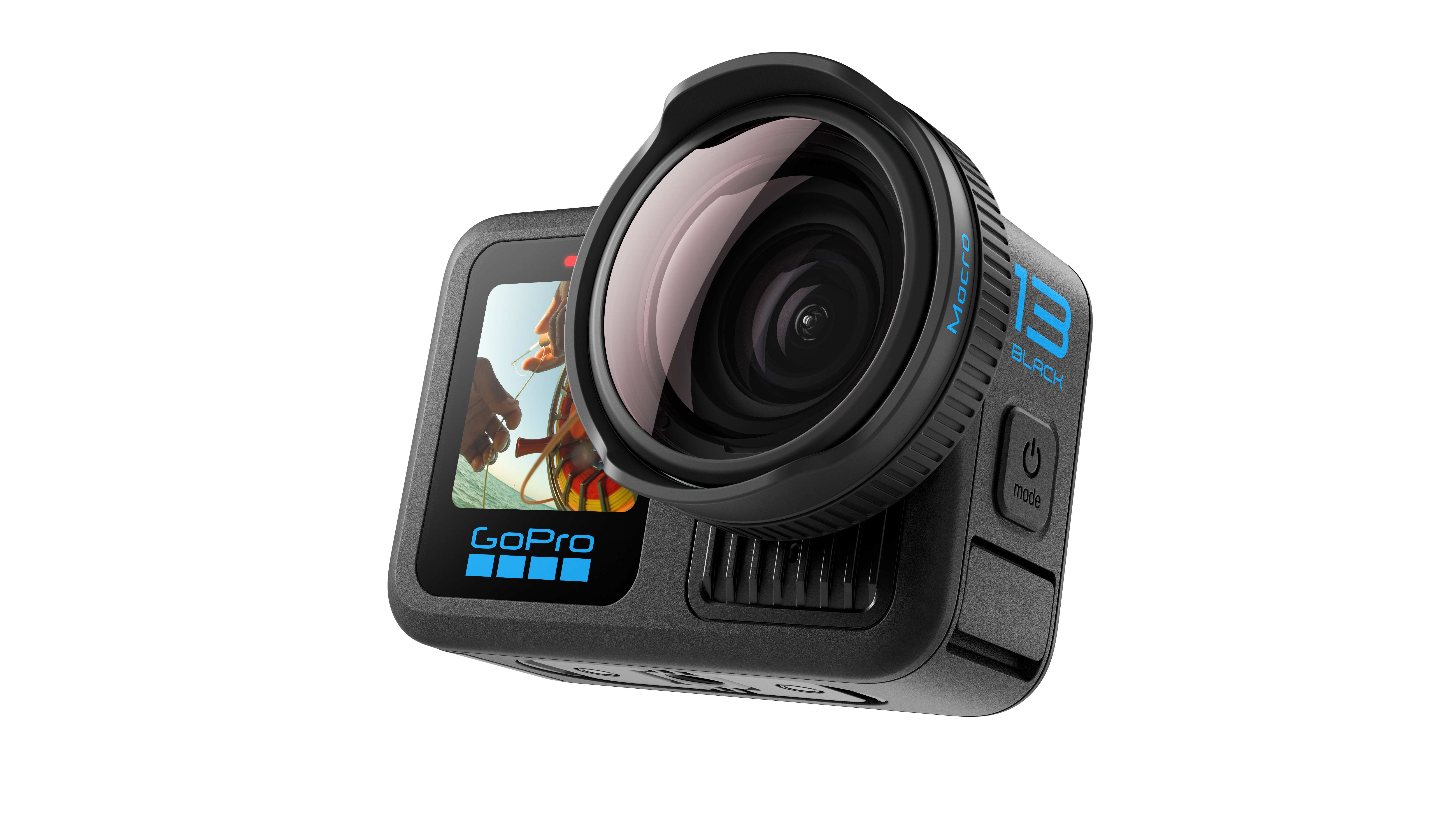
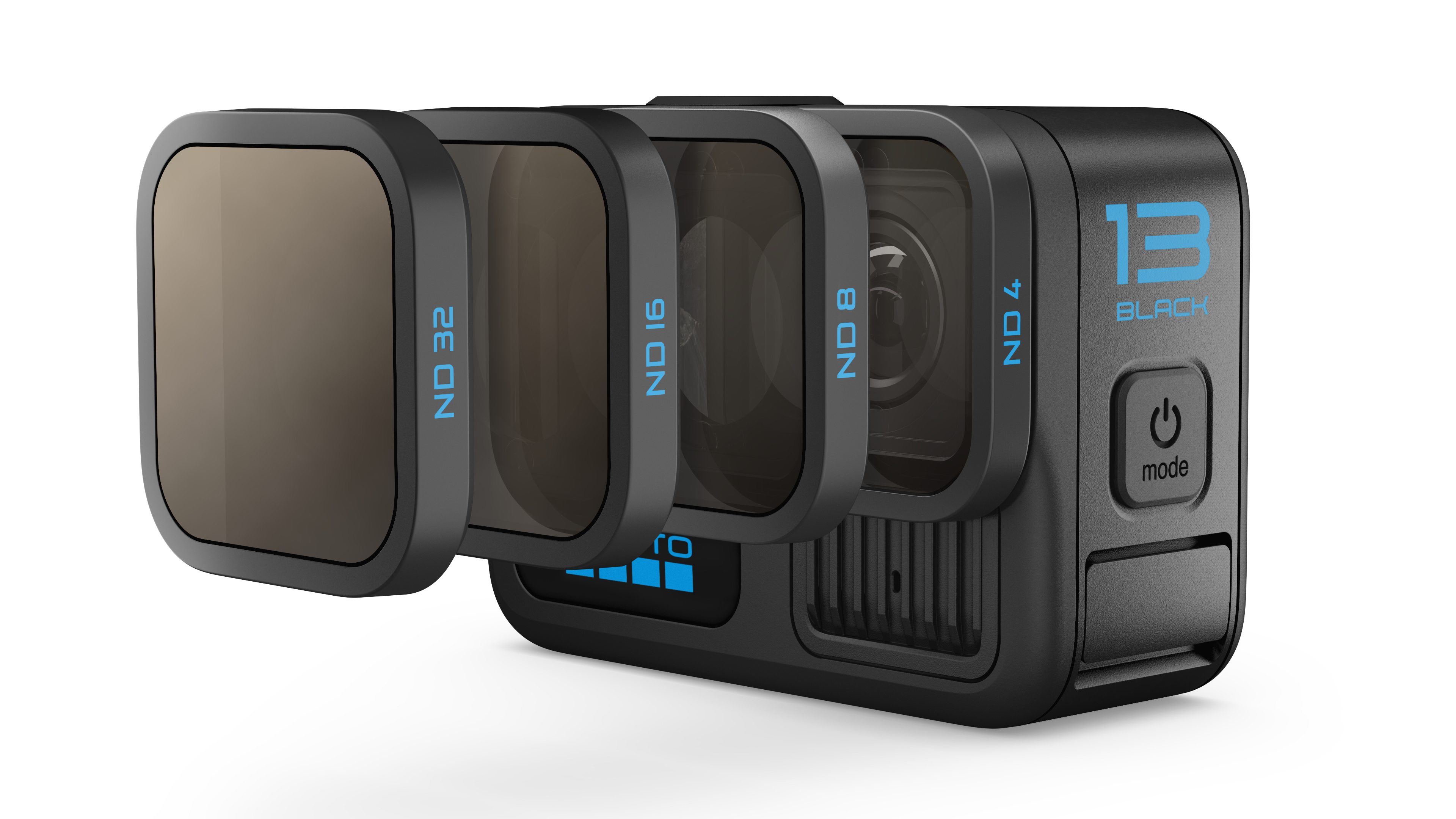

But what about the camera I hear you ask! The GoPro Hero13 Black is built around the same 1/1.9-inch sensor as the previous model, which tops out at the same 5.3K60P and 23MP images as the previous Hero12. This is no bad thing, as we found the quality from the Hero12 to be excellent. However many were hoping for a bump in sensor size to counter criticisms of low-light performance, with the 1/1.3-inch DJI Osmo 4 pinching the top spot in those scenarios.
But this does mean that nearly everything about the video output is the same as the previous model. Video can be shot in Standard, HDR, or Log modes for additional editing control, either in 8-bit or 10-bit and with a max bitrate of 120Mbps, although the Hero13 has been upgraded to the newer HLG HDR.
For aspect ratios, with the standard lens, you can shoot in the YouTube-ready 16:9, the social-friendly 9:16 or 4:3, or use the full 8:7 ratio of the sensor for cropping flexibility later.
However, the Hero 13 does bring a brand new burst mode to the table for super slow-mo footage – now with a whopping 400fps for up to 15 seconds in 720p, 10 seconds at 360fps in 900p, and even 5 seconds of 120fps video in 5.3K – all with Hypersmooth stabilization. For the maths nerds, a 15-second recording at 400fps translates to a 3-minute and 20-second video. If you don’t need to quite go that fast, standard footage can be shot in 4K/120p or 2.7K/240p.
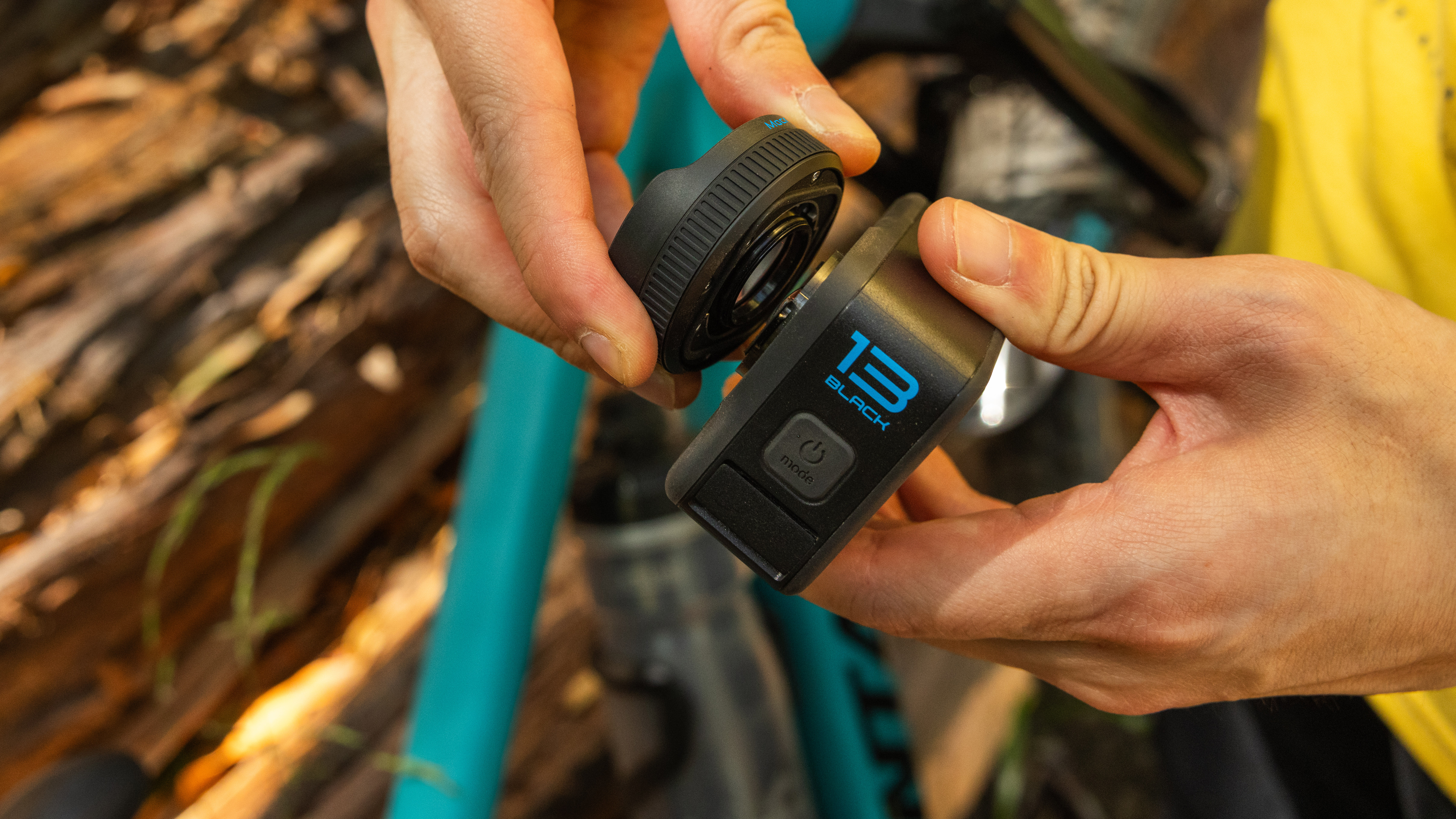
Design-wise, the Hero13 Black has had a subtle makeover but keeps the same shape and size, and the Hero13 should be compatible with Hero12 cases and accessories, including GoPro’s Media Mod. The design has ditched the speckled plastic of the last model and returns to the classic solid black of prior models, although adds a sporty-looking grill on the front – adding some design continuity with the newly announced GoPro Hero. The Hero13 also remains waterproof down to 33ft/10m with no additional accessories needed.
The Hero13 has GoPro’s built-in fold-down mounting fingers, although they are now not the only way to mount a Hero 13. The base also has a brand new optional magnetic latch system ($24.99/£24.99) to quickly lock onto magnetic mounts, including a new magnetic ball mount ($39.99/£39.99), although I am sure many third-party mounts will be along soon. GoPro did stress the magnetic latch isn’t as secure as the finger mount for extreme adventures, but for day-to-day use, it is a much faster way to mount and unmount your GoPro. Finally, there is also a 1/4-20 thread for mounting on the standard screw found on most tripods or gimbals.

Battery life has always been a critique of GoPros, but the Hero13 is attempting to go some way to solving this with a new battery and new thermal design to allow for longer record times. The new Enduro battery is now a 1,900mAh cell, which is 10% larger capacity than previous models, and GoPro quotes up to 1.5 hours of continuous recording in 5.3K30p, and over 2.5 hours of 1080p in 30p.
On average this is a 13.5% increase in performance from the Hero12 with airflow around the camera and an average 26.7% improvement with no airflow – although these figures vary a lot depending on which settings you are shooting in, but across the board higher frame rate options see the biggest boosts to battery life. Some significant increases include a 22% battery gain for 2.7K/240p with airflow or a huge 38% increase for 5.3K/60p with no airflow.
And on the subject of battery drain – GPS is back! After removing GPS from the previous model in an attempt to save some battery life, but much to the aggravation of a large set of users, GoPro has added GPS back into the Hero13 Black. Although it doesn’t seem to have found the magic solution to its battery thirst. GPS not only brings location data to your photos and videos, but the GPS can also add graphical overlays to videos displaying telemetry data including speed and g-force to make more contextual videos.
And if you find you don’t have enough power – the 13 Black also has an optional new battery door. Called Contacto, it offers a MagSafe-style magnetic charging cable that can provide power to the camera. Simple to snap on and off in a hurry, the cable is fully waterproof with an IPX7 rating, so can even be used underwater (providing the power supply is in a safe place) for continuous power for extended recording times – as well as being a super simple way to charge the camera. The downside – this doesn’t come as standard. The Contacto Magnetic Door and Power Cable Kit are available for an additional $79.99/£79.99.

For connectivity, the Hero13 can be connected via Bluetooth to external microphones including the world's most popular headset – Apple’s AirPods. There is also a new audio tuning menu to switch between standard true-to-life sound and voice isolation. The camera also has been upgraded to WiFi 6, which should make offloading footage up to 40% faster, or of course, you can still use the USB-C connection, or pop out the MicroSD card.
The Hero13 works alongside the GoPro Quik app to offload and playback footage. And if you have a Quik, Premium, or Premium+ subscription then you can get access to cloud storage, automatic video highlights, new editing features and templates as well HyperSmooth Pro stabilization depending on which tier you go from. GoPro Subscriptions start at $9.99/year for Quik, $49.99/year for Premium, and $99.99/year for Premium+.
The Hero 13 Black is available to preorder now, with in-store availability from September 10. Available in two options, the camera alone is priced at $399.99/£399.99/AU$649.95, or there is a Hero 13 Black Creator Edition which costs $599.99/£599.99 and includes the Volta Power Grip, Media Mod, and Light Mod.
Check out the key differences in my GoPro Hero13 Black vs Hero12 Black comparison







